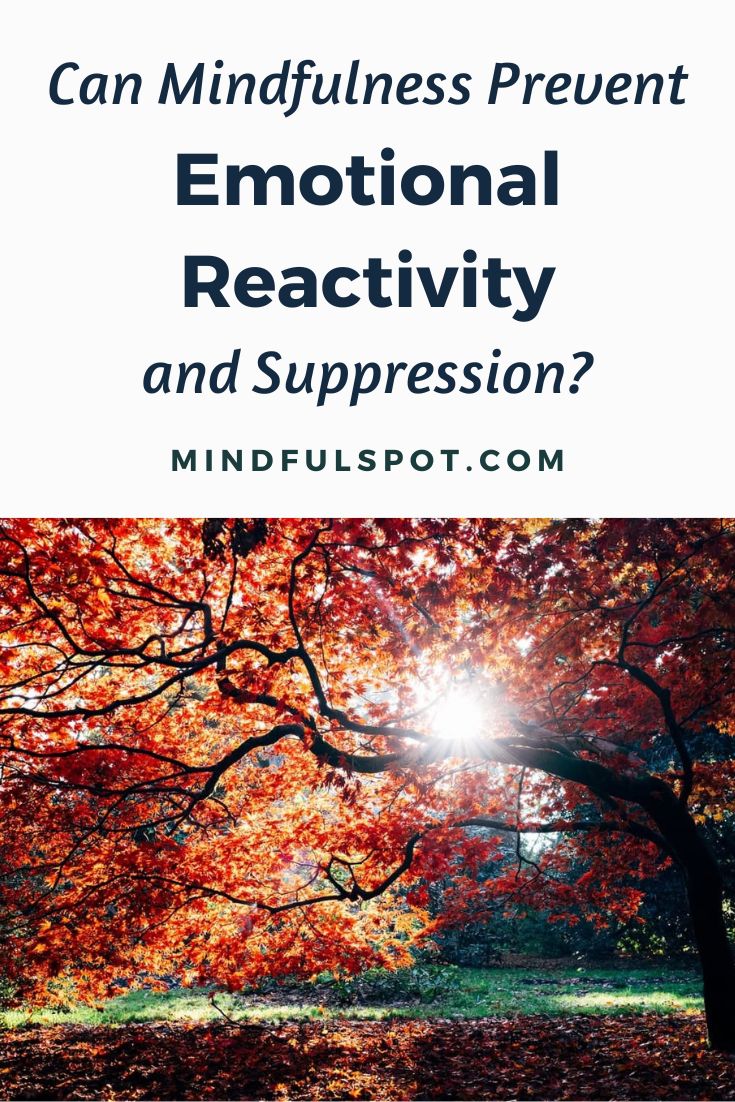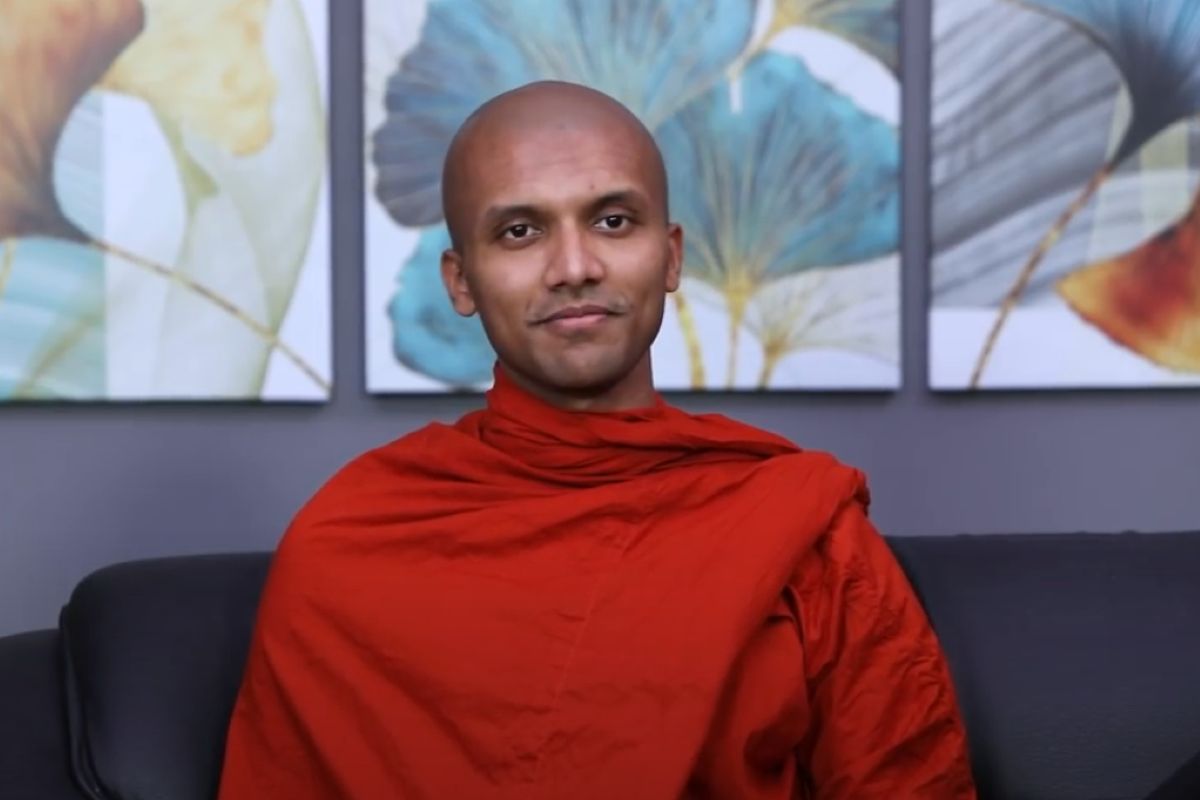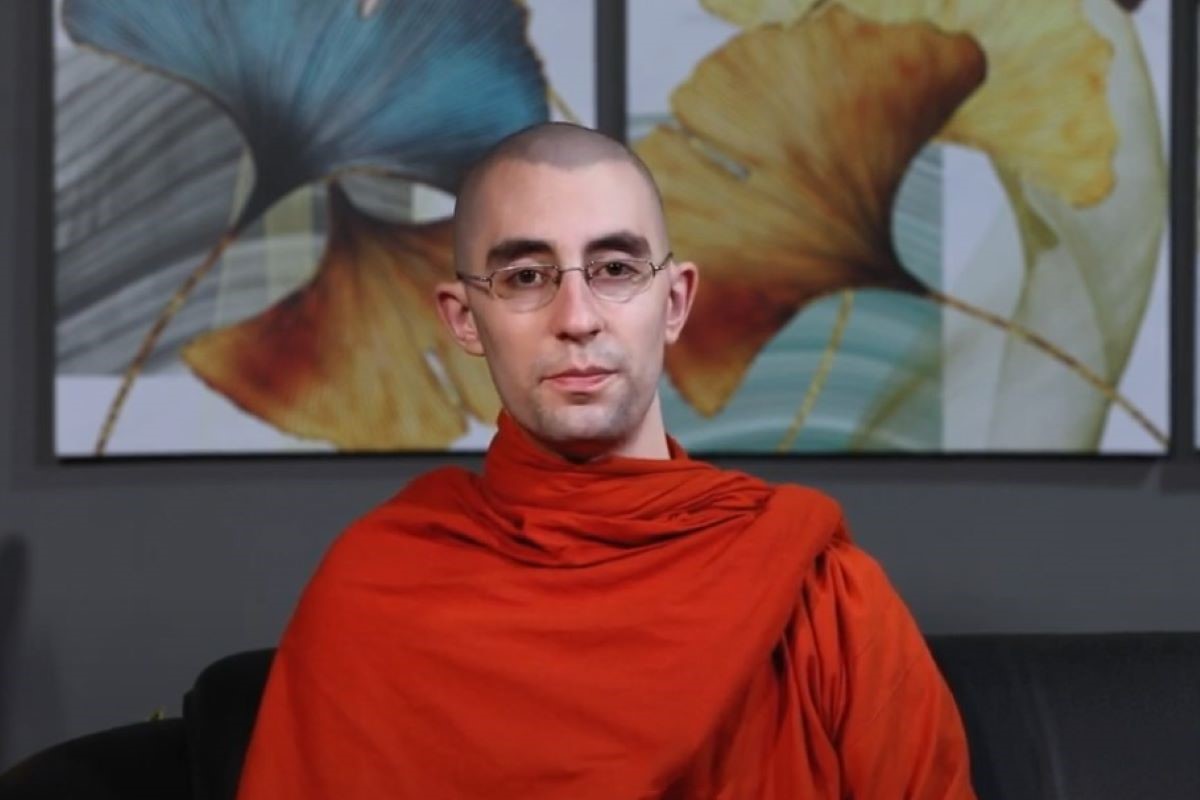Can mindfulness prevent emotional reactivity and suppression?
If you’ve been practicing mindfulness meditation, you may have noticed that the way you react to situations and people has changed.
When faced with challenges, you’re able to keep your emotional equanimity just long enough to assess the situation and take the right action, both for yourself and other people. This is what Bhikkhu Analayo describes in a passage from his book Satipatthana: The Direct Path to Realiazation. He writes1:

FREE Self-Test: How Spiritual Are You?
Mindfulness silently observes, like a spectator at a play, without in any way interfering. Some refer to this non-reactive feature of mindfulness as ‘choiceless’ awareness. ‘Choiceless’ in the sense that with such awareness one remains impartially aware, without reacting with likes and dislikes.
Such silent and non-reactive observation can at times suffice to curb unwholesomeness, so that an application of mindfulness can have quite active consequences. Yet the activity of mindfulness is confined to a detached observation. That is, mindfulness does not change an experience, it deepens it.
This non-interfering quality of mindfulness is required to enable one clearly to observe the building up of reactions and their underlying motives. As soon as one becomes in any way involved in a reaction, the detached observational vantage point is immediately lost.
The detached receptivity of mindfulness enables one to step back from the situation at hand and thereby to become an unbiased observer of one’s subjective involvement and of the entire situation. This detached distance allows for a more objective perspective ….
This detached but receptive stance of satipatthana2 constitutes a ‘middle path,’ since it avoids the two extremes of suppression and reaction. The receptivity of mindfulness, in the absence of both suppression and reaction, allows personal shortcomings and unjustified reactions to unfold before the watchful stance of the meditator, without being suppressed by the affective investment inherent in one’s own self-image.
In other words, this passage from Satipatthana states that if a mental hindrance arises, the task of mindfulness is to know that the hindrance is present, to know what has led to its arising, and to know what will lead to its disappearance. If you want to learn more, read our article about mindful sense-restraint that dives deeper into this topic.
About the book’s author: Ven. Bhikkhu Analayo was born in 1962 in Germany, was ordained in 1995 in Sri Lanka, and completed his PhD on satipatthana at the University of Peradeniya in 2000. At present, he is mainly engaged in the practice of meditation, and among other things contributes to the Encyclopaedia of Buddhism. He has authored several books on Buddhist practice, including Satipatthana and Compassion and Emptiness in Early Buddhist Meditation.

FREE mindfulness resources for stress relief
Editor’s note: This article was updated with a link to mindful sense-restraint.

Footnotes:
- In the quoted passage, I’ve replaced all instances of the Pali term “sati” with its standard English translation “mindfulness.” For more information, see our article on seven translations of the word “mindfulness.” ↑
- Satipatthana is a Buddhist meditation technique also known as The Four Foundations of Mindfulness. For more information, see our article on the relationship between mindfulness and satipatthana. ↑
I’m a freelance writer and mindfulness advocate behind this blog. I started my meditation practice in 2014, and in 2017 I launched this website to share what I learn with others. Here are the three things you can do here:
1. Schedule a free consult if you want to learn Buddhist meditation.
2. Download free mindfulness resources for stress relief
3. Join Patreon for exclusive content and community meetings.







